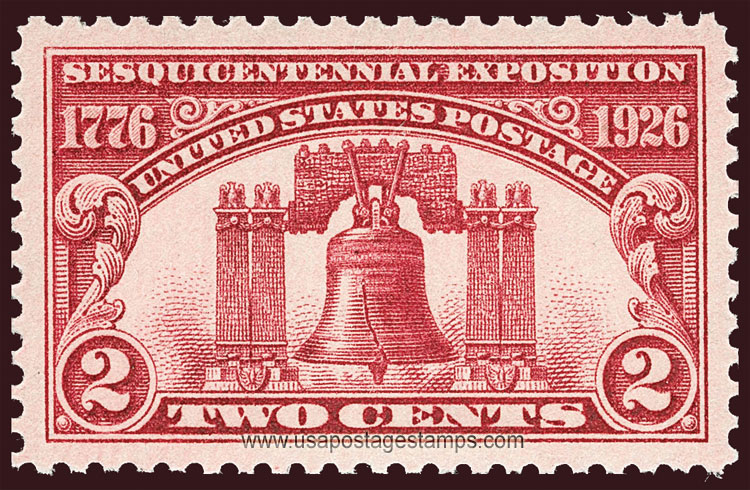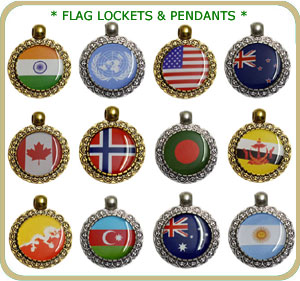US 1926 Sesquicentennial Exposition 'Liberty Bell' 2c. Scott. 627

Series: Sesquicentennial Exposition Issue
Stamp details: Liberty Bell (1752), Philadelphia, Pennsylvania
Issued date: 10-05-1926 (dd/mm/yyyy)
Face value: 2c.
Emission: Commemorative
Watermark: No Watermark
Catalogue No:-
Scott (USA): 627
Stanley Gibbons (UK): 628
Michel (Germany): 303
Yvert et Tellier (France): 268
Dimensions (height x width):
25.4mm x 38.1mm
Printer: Bureau of Engraving and Printing
Print Method: Flat Plate
Stamp Colors: Carmine rose
Perforation: Perf 11
Themes: Bell, UNESCO World Heritage Site
Total print: 307,731,900 (estimate)
Stamp details: Liberty Bell (1752), Philadelphia, Pennsylvania
Issued date: 10-05-1926 (dd/mm/yyyy)
Face value: 2c.
Emission: Commemorative
Watermark: No Watermark
Catalogue No:-
Scott (USA): 627
Stanley Gibbons (UK): 628
Michel (Germany): 303
Yvert et Tellier (France): 268
Dimensions (height x width):
25.4mm x 38.1mm
Printer: Bureau of Engraving and Printing
Print Method: Flat Plate
Stamp Colors: Carmine rose
Perforation: Perf 11
Themes: Bell, UNESCO World Heritage Site
Total print: 307,731,900 (estimate)
Description:- The Liberty Bell, previously called the State House Bell or Old State House Bell, is an iconic symbol of American independence, located in Philadelphia, Pennsylvania. Once placed in the steeple of the Pennsylvania State House (now renamed Independence Hall), the bell today is located across the street in the Liberty Bell Center in Independence National Historical Park.
The bell was commissioned in 1751 by the Pennsylvania Provincial Assembly from the London firm of Lester and Pack (known subsequently as the Whitechapel Bell Foundry), and was cast with the lettering "Proclaim LIBERTY Throughout all the Land unto all the Inhabitants Thereof", a Biblical reference from the Book of Leviticus (25:10). The bell first cracked when rung after its arrival in Philadelphia, and was twice recast by local workmen John Pass and John Stow, whose last names appear on the bell. In its early years, the bell was used to summon lawmakers to legislative sessions and to alert citizens about public meetings and proclamations.
Source: en.wikipedia.org/wiki/Liberty_Bell
The bell was commissioned in 1751 by the Pennsylvania Provincial Assembly from the London firm of Lester and Pack (known subsequently as the Whitechapel Bell Foundry), and was cast with the lettering "Proclaim LIBERTY Throughout all the Land unto all the Inhabitants Thereof", a Biblical reference from the Book of Leviticus (25:10). The bell first cracked when rung after its arrival in Philadelphia, and was twice recast by local workmen John Pass and John Stow, whose last names appear on the bell. In its early years, the bell was used to summon lawmakers to legislative sessions and to alert citizens about public meetings and proclamations.
Source: en.wikipedia.org/wiki/Liberty_Bell




